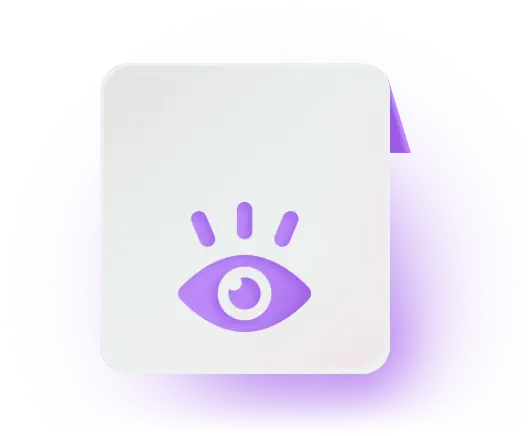- Written by Harshitha A
- Last Modified on 12-12-2024
Exam Brief
According to a law of the Government of India, the Meghalaya Board of School Education (MBOSE) is responsible for authorizing, regulating, controlling, and improving education and academic standards in the state of Meghalaya. The Meghalaya Board of Education presently conducts secondary and higher secondary examinations.
In essence, the board aims to instill critical thinking, open-mindedness, and flexibility in students learning. MBOSE prepares the curriculum and syllabus for Class 11 students and is also in charge of conducting the Class 11 exam. Read on to find out more about the MBOSE Class 11 exam.
Exam Summary
All academic matters connected to the framing and creating of the syllabus, reviewing and publishing and distributing textbooks for all courses, administering examinations, and granting graduate credentials are overseen by the Meghalaya Board. Students in grades 8 through 12 can also utilise the Meghalaya Board’s distance education programme.
MBOSE 11th Exam 2025: Highlights
| Name of the Board |
Meghalaya Board of School Education (MBOSE) |
| Headquarters |
Shillong, Meghalaya, India |
| Establishment |
19th October 1973 |
| Official Language |
English |
| Mode of Examination |
Offline |
| Eligibility |
10th Pass |
| Official Website |
www.mbose.in |
The Meghalaya Board’s responsibilities include overseeing the management of several administrative and educational sectors, as well as focusing on examinations and ensuring that they are done equitably. It is also in charge of issuing the syllabus and curriculum, guaranteeing that the most recent course curriculum for 11th grade is current with current economic demands and trends.
On its official website, the board normally posts all critical information such as significant dates, guidelines, the release of admit cards, and results.
Official Website Link
http://www.mbose.in
Embibe Notice Board/Notification
Latest Update
The Meghalaya Board of School Education (MBOSE) will released the date sheet for the Class 11 exams soon
Learn Exam Concepts on Embibe
Exam Calendar
| Dates for the Examinations (Tentative) |
Subjects |
| 03 March (Thursday) |
|
| 04 March (Friday) |
- MIL (Modern Indian Language) or Alternate English Foundation Course (Vocational)
|
| 07 March (Monday) |
|
| 08 March (Tuesday) |
- Political Science
- Physics
- Accountancy
- Computer Technique Paper 1 (Vocational)
|
| 09 March (Wednesday) |
|
| 10th March (Thursday) |
- Mathematics
- Computer Technique Paper 2 (Vocational)
|
| 11th March (Friday) |
- Education
- Business Studies
|
| 14th March (Monday) |
- Computer Science
- Informatics Practices
- Computer Technique Paper 3 (Vocational)
|
| 15th March (Tuesday) |
|
| 16th March (Wednesday) |
- Economics
- Biology
- Entrepreneurship (Vocational)
|
| 17th March (Thursday) |
- Philosophy
- Chemistry
- Entrepreneurship (Commerce)
|
Exam Syllabus
The Meghalaya Board 11th syllabus is based on the NCERT and CBSE’s new and revised syllabuses. Textbooks from the newly revised CBSE and NCERT Curriculum will be used. The syllabus and academic options are the same as in CBSE, with students in class 11th choosing from three streams: Science, Arts, and Commerce. Regardless of the student’s academic stream, English is a mandatory subject.
Syllabus for Biology
| Units |
Chapters |
| Diversity of Living Organisms |
The Living World
Biological Classification
Plant Kingdom
Animal Kingdom |
| Structural Organisation in Plants and Animals |
Morphology Of Flowering Plants
Anatomy Of Flowering Plants
Structural Organisation In Animals |
| Cell: Structure and Function |
Cell : The Unit Of Life
Biomolecules
Cell Cycle And Cell Division |
| Plant Physiology |
Transport In Plants
Mineral Nutrition
Photosynthesis In Higher Plants
Respiration In Plants
Plant Growth And Development |
| Human Physiology |
Digestion And Absorption
Breathing And Exchange Of Gases
Body Fluids And Circulation
Excretory Products And Their Elimination
Locomotion And Movement
Neural Control And Coordination
Chemical Coordination And Integration |
Syllabus for Chemistry
| Units |
Topics |
| Some Basic Concepts of Chemistry |
- General introduction: Importance and scope of chemistry
- Nature of matter
- Laws of chemical combination
- Dalton’s atomic theory
- Concept of elements, atoms, molecules
- Atomic and molecular masses
- Mole concept and molar mass
- Percentage composition
- Empirical and molecular formula
- Chemical reactions
- Stoichiometry and calculations based on stoichiometry
|
| Structure of an Atom |
- Discovery of electron, proton and neutron
- Atomic number
- Isotopes and isobars
- Thomson’s model and its limitations
- Rutherford’s model and its limitations
- Bohr’s model and its limitations
- Concept of shells and subshells
- Dual nature of matter and light
- De Broglie’s relationship
- Concept of orbitals
|
| Classification of Elements and Periodicity in Properties |
- Significance of classification
- Brief history of the development of periodic table
- Modern periodic law and the present form of periodic table
- Ionic radii
- Inert gas radii
- Ionization enthalpy
- Electron gain enthalpy
- Electronegativity
- Valency
|
| Chemical Bonding and Molecular Structure |
- Valence electrons
- Ionic bond
- Covalent bond
- Bond parameters
- Covalent character of ionic bond
- Valence bond theory
- Geometry of covalent molecules
- Concept of hybridization
- Molecular orbital theory of homonuclear diatomic molecules (qualitative idea only)
- Hydrogen bond
|
| States of Matter: Gases and Liquids |
- Three states of matter
- Intermolecular interactions
- Types of bonding
- Melting and boiling points
- Boyle’s law
- Charles law
- Gay lussac’s law
- Ideal behaviour
- Empirical derivation of gas equation
- Avogadro’s number
- Deviation from ideal behaviour
- Liquid state – vapour pressure
- Viscosity and surface tension (qualitative idea only, no mathematical derivations)
|
| Chemical Thermodynamics |
- Concepts of system and types of systems
- Surroundings
- Work
- Heat
- Energy
- Extensive and Intensive properties
- State functions
- Enthalpy of bond dissociation
- Combustion
- Formation
- Atomization
- Sublimation
- Phase transition
- Ionization
- Solution and dilution
- Introduction of entropy as a state function
- Third law of thermodynamics (brief introduction)
|
| Equilibrium |
- Equilibrium in physical and chemical processes
- Dynamic nature of equilibrium
- Law of mass action
- Equilibrium constant
- Factors affecting equilibrium
- Ionization of poly basic acids
- Acid strength
- Concept of pH
- Henderson Equation
- Solubility product
|
| Redox Reactions |
- Concept of oxidation and reduction
- Redox reactions
- Oxidation number
- Balancing redox reactions
- In terms of loss and gain of electrons and change in oxidation number
- Applications of redox reactions
|
| Hydrogen |
- Position of hydrogen in periodic table
- Occurrence
- Isotopes
- Preparation
- Properties and uses of hydrogen
- Hydrides-ionic covalent and interstitial
- Physical and chemical properties of water
- Heavy water
- Hydrogen peroxide-preparation
- Reactions and structure and use
- Hydrogen as a fuel
|
| s-Block Elements |
- Group 1 and Group 2 elements:
- General introduction
- Electronic configuration
- Anomalous properties of the first element of each group
- Diagonal relationship
- Trends in the variation of properties
- Trends in chemical reactivity with oxygen
- Water
- Hydrogen and halogens uses
- Preparation and Properties of some important compounds:
- Sodium Carbonate
- Sodium Chloride
- Sodium Hydroxide and Sodium hydrogen carbonate
- Biological importance of Sodium and Potassium
- Calcium Oxide and calcium carbonate and their industrial uses
- Biological importance of Magnesium and calcium
|
| Some p-Block Elements |
- General Introduction to p-Block Elements
- Group 13 Elements: General introduction
- Electronic configuration
- Occurrence
- Variation of properties
- Oxidation states
- Trends in chemical reactivity
- Anomalous properties of first element of group
- Boron-physical and chemical properties
- Some important compounds: Borax, coric acid, boron hydrides
- Aluminium: Reactions with acids and alkalies
- Group 14 elements:General introduction
- Electronic configuration
- Occurence
- Variation of properties
- Oxidation states
- Trends in chemical reactivity
- Anomalous behaviour of first elements
- Uses of some important compounds: oxides
- Important compounds of silicon and a few uses
- Silicon tetrachlorides
- Silicones
- Silicates and zeolites
|
| Organic Chemistry (Principles and Techniques) |
- General Introduction
- Methods of purification
- Qualitative and quantitative analysis
- Classification and IUPAC nomenclature of organic compounds
- Electronic displacements in a covalent bond
- Inductive effect
- Electromeric effect
- Resonance and hyperconjugation
- Homolytic and heterolytic fission of a covalent bond
- Carbocations
- Carbanions
- Electrophiles and nucleophiles
- Types of organic reactions
|
| Hydrocarbons |
- Classification of Hydrocarbons: Aliphatic Hydrocarbons
- Alkanes – Nomenclature, isomerism, conformation (ethane only), physical properties, chemical reactions including radical mechanism of halogenation, combustion and pyrolysis.
- Alkenes – Nomenclature, structure of double bond (ethene), geometrical isomerism, physical properties, methods of preparation, halogen, water, hydrogen halides, oxidation, mechanism of electrophilic addition.
- Aromatic Hydrocarbons: Introduction, IUPAC nomenclature, benzene: resonance, aromaticity, chemical properties, mechanism of electrophilic substitution.
- Nitration
- Sulphonation
- Halogenation
- Friedel Craft’s alkylation and acylation
- Directive influence of functional group in monosubstituted benzene
- Carcinogenicity and toxicity
|
| Environmental Chemistry |
- Environmental pollution – air, water and soil pollution
- Chemical reactions in atmosphere
- Smog
- Major atmospheric pollutants
- Acid rains
- Ozone and its reaction
- Effects of depletion of ozone layer
- Greenhouse effect and global warming-pollution due to industrial wastes
- Green chemistry as an alternative tool for reducing pollution
- Stretagies for control of environment pollution
|
Syllabus for Physics
| Units |
Chapters |
Topics |
| World and Measurement |
Physical World
Units and Measurements |
- Physics-scope and excitement
- Nature of physical laws
- Physics, technology and society
- Need for measurement
- Units of measurement
- Systems of units
- SI units
- Fundamental and
- derived units
- Length, mass and time measurements
- Accuracy and precision of measuring instruments
- Errors in measurement
- Significant figures
- Dimensions of physical quantities
- Dimensional analysis and its applications.
|
| Kinematics |
Motion in a Straight Line
Motion in a Plane |
- Frame of reference
- Motion in a straight line
- Position-time graph, speed and velocity.
- Differentiation and integration for characterising motion, uniform and non-uniform motion, average speed and instantaneous velocity, evenly accelerated motion, velocity-time and position-time graphs are all covered.
- Relations for uniformly accelerated motion (graphical treatment).
- Scalar and vector quantities
- Position and displacement vectors
- General vectors and their notations
- Equality of vectors
- Multiplication of vectors by a real number
- Addition and
- subtraction of vectors
- Relative velocity, Unit vector
- Resolution of a vector in a plane,
- rectangular components
- Scalar and Vector product of vectors.
|
| Laws of Motion |
Laws of Motion |
- Intuitive concept of force
- Inertia
- Newton’s first law of motion
- Momentum and Newton’s second law of motion
- Impulse
- Newton’s third law of motion.
- Law of conservation of linear momentum and its applications.
- Equilibrium of concurrent forces
- Static and kinetic friction
- Laws of friction
- Rolling friction
- Lubrication
|
| Work, Energy, and Power |
Work, Energy, and Power |
- Work done by a constant force and a variable force
- Kinetic energy
- Work-energy theorem
- Power
- Notion of potential energy
- Potential energy of a spring
- Conservative forces
- Conservation of mechanical energy (kinetic and potential energies)
- Non-conservative forces
- Motion in a vertical circle
- Elastic and inelastic collisions in one and two dimensions
|
| Motion of System of Particles and Rigid Body |
System of Particles and Rotational Motion |
- Centre of mass of a two-particle system
- Momentum conservation and centre of mass motion.
- Centre of mass of a rigid body
- Centre of mass of a uniform rod
- Moment of a force, torque
- Angular momentum
- Law of conservation of angular momentum and
- its applications.
- Equilibrium of rigid bodies
- Rigid body rotation and equations of rotational motion
- Comparison
- of linear and rotational motions
- Moment of inertia
- Radius of gyration
- Values of moments of inertia for simple geometrical
- objects (no derivation).
- Statement of parallel and perpendicular axes theorems and their
- applications.
|
| Gravitation |
Gravitation |
- Kepler’s laws of planetary motion, universal law of gravitation.
- Acceleration due to gravity and its variation with altitude and depth.
- Gravitational potential energy and gravitational potential
- Escape velocity
- Orbital velocity of a satellite
- Geo-stationary satellites.
|
| Properties of Bulk Matter |
Mechanical Properties of Solids
Mechanical Properties of Fluids
Thermal Properties of Matter |
- Elastic behaviour
- Stress-strain relationship
- Hooke’s law
- Young’s modulus, bulk modulus, shear modulus of rigidity
- Poisson’s ratio
- Elastic energy
- Pressure due to a fluid column
- Pascal’s law and its applications (hydraulic lift and hydraulic
- brakes)
- Effect of gravity on fluid pressure.
- Heat, temperature
- Thermal expansion
- Thermal expansion of solids, liquids and gases
- Anomalous expansion of water
- Specific heat capacity
- Cp, Cv – calorimetry
- Change of state –
- latent heat capacity.
|
| Thermodynamics |
Thermodynamics |
- Thermal equilibrium and definition of temperature (zeroth law of thermodynamics)
- Heat, work and internal energy
- First law of thermodynamics
- Isothermal and adiabatic processes
- Second law of thermodynamics
- Reversible and irreversible processes
- Heat engine and refrigerator
|
| The behaviour of Perfect Gases and Kinetic Theory of Gases |
Kinetic Theory |
- Equation of state of a perfect gas, work done in compressing a gas.
- Kinetic theory of gases
- Assumptions
- Concept of pressure
- Kinetic interpretation of Temperature
- rms speed of gas molecules
- Degrees ofdom
- Law of equi-partition of energy (statement only) and application to specific heat capacities of gases
- Concept of mean path
- Avogadro’s number.
|
| Mechanical Waves and Ray Optics |
Oscillations and Waves
RAY OPTICS |
- Periodic motion – time period
- Frequency
- Displacement as a function of time
- Periodic functions
- Simple harmonic motion (S.H.M) and its equation
- Phase
- Oscillations of a loaded spring-restoring force and force constant.
- Reflection of light
- Spherical mirrors
- Mirror formula
- Refraction of light
- Total internal reflection and its applications
- Optical fibres
- Refraction at spherical surfaces
- Lenses
- Thin lens formula
- Lensmaker’s formula
- Magnification
- Power of a lens
- Combination of thin lenses in contact
- Refraction and dispersion of light through a prism.
|
Syllabus for English Core
| Reading Comprehension |
Writing Skills |
| (Prose) The Last Lesson, Lost Spring, Deep Water, The Rattrap, Indigo, Poets and Pancakes, The interview, Going Places, etc. |
(Poems) My Mother at Sixty-Six, An Elementary School Classroom in a Slum, Keeping Quiet, A Thing of Beauty, A Roadside Stand, Aunt Jennifer’s Tigers, etc. |
| (Grammar) |
(Comprehension) |
Syllabus for Mathematics
| Units |
Chapters |
Topics |
| Sets and Functions |
Sets
Relations & Functions
Trigonometric Functions |
- Sets and their representations
- Empty set
- Finite and Infinite sets
- Equal sets
- Subsets
- Subsets of a set of real numbers especially intervals (with notations)
- Power set
- Universal set
- Venn diagrams
- Union and Intersection of sets
- Difference of sets
- Complement of a set
- Properties of Complement
- Ordered pairs
- Cartesian product of sets
- The number of elements in the Cartesian product of two finite sets
- Cartesian product of the set of reals with itself (up to R x R x R)
- Definition of relation, pictorial
- diagrams, domain, co-domain and range of a relation.
- Function as a special type of relation
- Pictorial representation of a function, domain, co-domain and range of a function.
- Functions with real values these functions’ domain and range, as well as their graphs, are constant, identity, polynomial, rational, modulus, signum, exponential, logarithmic, and largest integer functions.
- Sum, difference, product and quotients of functions.
|
| Algebra |
Principle of Mathematical Induction
Complex Numbers and Quadratic Equations
Linear Inequalities
Permutations and Combinations
Binomial Theorem
Sequence and Series |
- The use of the approach is motivated by looking at natural numbers as the least inductive subset of real numbers, which is the process of proof by induction.
- Simple uses of the mathematical induction principle.
- Linear inequalities
- The number line representation of algebraic solutions of linear inequalities in one variable.
- Linear inequalities in two variables are graphically solved.
- Finding a solution to a system of linear inequalities in two variables using a graphical technique.
|
| Coordinate Geometry |
Straight Lines
Conic Sections
Introduction to Three-dimensional Geometry |
- Brief recall of two-dimensional geometry from earlier classes.
- Shifting of origin.
- The slope of a line and angle between two lines.
- Various forms of equations of a line: parallel to axis, point-slope form, slope-intercept form, two-point form, intercept form and normal form.
- General equation of a line.
- Equation of family of lines passing through the point of intersection of two lines.
- Distance of a point from a line.
- Coordinate axes and coordinate planes in three dimensions.
- Coordinates of a point.
- Distance between two points and section formula.
|
| Calculus |
Limits and Derivatives |
- Both as a distance function and geometrically, the derivative is introduced as a rate of change.
- The limitation is an intuitive concept.
- Polynomial and rational function limits, as well as trigonometric, exponential, and logarithmic functions.
- The scope of a tangent of the curve, the derivative of the sum, difference, product, and quotient of functions are all included in the definition of the derivative.
- Polynomial and trigonometric functions have derivatives.
|
| Mathematical Reasoning |
Mathematical Reasoning |
- Statements that are mathematically sound.
- Connecting words/phrases – consolidating comprehension of “if and only if (necessary and sufficient) condition,” “implies,” “and/or,” “implied by,” “and,” “or,” “there exists,” and their applications through a variety of real-world and mathematical situations.
- Validating the claims that contain linking words.
- Contradiction, converse, and contrapositive are all terms that have different meanings.
|
| Statistics and Probability |
Statistics
Probability |
- Measures of Dispersion
- Range
- Mean deviation
- Variance and standard deviation of ungrouped/grouped data.
- Frequency distributions with the same mean but distinct variances are analysed.
- Random experiments; outcomes, sample spaces (set representation).
- Events; occurrence of events, ‘not’, ‘and’ and ‘or’ events, exhaustive events, mutually exclusive events.
- Axiomatic (set-theoretic)
- Probability
- Connections with other theories of earlier classes.
- Probability of an event.
- Probability of ‘not’, ‘and’ and ‘or’ events.
|
Syllabus for Political Science
| Constitution of India |
Election and Representation |
| Rights in the Indian Constitution |
The Executive |
| The Legislature |
The Judiciary |
| Federalism |
Local Governments |
| Constitution as a Living Document |
Political Theory |
| Freedom, Equality, Social Justice, Rights, Citizenship, Nationalism, etc |
Socialism, Peace, and Development |
Syllabus for History
| Introduction to World History |
Early Societies |
| Empires |
Changing Traditions. Three orders, Changing cultural traditions, etc |
| Paths to Modernisation, the industrial revolution, etc |
Map Work |
| Project Work |
|
Syllabus for Geography
| Geography as a Discipline |
The Earth, Landforms, Climate, Water, Life of the Earth, etc |
| Physical Environment, Physiography, Climate, vegetation, etc |
Natural Hazards and Disasters |
| Map Work |
Practical Work |
Syllabus for Fine Arts
| Portfolio Making |
Prehistoric Art Painting |
| Art of Indus Valley |
Buddhist, Jain, and Hindu Art |
| Temple Sculptures, Bronzes, and Artistic Aspects of Indo-Islamic Architecture |
Project Work |
Syllabus (Computer Science) Arts/Commerce/Science Streams
| Computer Hardware |
Data Representation |
| Introduction to Windows |
HTML Fundamentals |
| Text Alignments and Lists |
Hyperlinks and Anchors |
| Text Formatting and Fonts |
Images |
| Tables and Table Layouts |
Frames |
| Media |
HTML Forms |
| Networks and Topologies |
Introduction and Transmission |
| Network Devices and Security |
– |
The theory portion is worth 70 points, while the practical portion is worth 20 points. The Computer Science textbook lists the activities that should be completed as Practicals.
Syllabus (Bengali) Elective Language
| (Grammar) Transformation of Sentences, Correction of Words, etc |
(Composition) Comprehension, Expansion of Idioms, Paragraph Writing, etc. |
| (Prose) Bonkim, Biral, Chandra, Rajbidrohi, etc |
(Literature) Madhyamik Bangla, Sahitya Sankalan, Siksh Samsad, Ucchotoro, etc. |
| (Poetry) Protarona, Chakraborty, Tagore, Sengupta, Lohar Byatha, etc. |
(Drama) Sajghar by Akhil Niyogi |
Syllabus (Assamese) MIL
| (Prose) Sahitya Saurav, Mor Mrigaya, Jibonor Santiparba, Badha Kavya, Asomor Loka Sanskriti, etc. |
(Poetry) Borgeet, Prakriti, Lachit Phukan, Naatghar, etc. |
| (Grammar) Amplification and Sentence making, etc. |
(Unseen Passage) Phakara, Jojona, ETA Sabdat, Prakash Kara, etc. |
Syllabus (Khasi Language)
| Elementary Theory and Criticism |
History of Khasi Literature |
| Poetry |
Short Story |
The schools will give the chapters and other details, as well as the textbooks that the students will use.
Syllabus for Accountancy
| Introduction to Accounting |
Theory Base of Accounting |
| Recording of Business Transaction |
Bank Reconciliation Statements |
| Depreciation, Provisions, and Reserves |
Bills of Exchange |
| Trial Balance |
Rectification of Errors |
| Financial Statements |
Project Work |
Syllabus for Business Studies
| Nature and Forms of Business |
Forms of Business Organisations |
| Public, Private, and Global Enterprises |
Business Services |
| Emerging Modes of Business |
Social Responsibility of Business |
| Business Ethics |
Sources of Business Finance |
| Small Business |
Internal Trade |
| International Business |
Project Work |
Syllabus for Economics
| Introduction to Economics |
Collection, Organisation, and Presentation of Data |
| Statistical Tools and Interpretation |
Introduction to Microeconomics |
| Consumers Equilibrium and Demand |
Producer Behaviour and Supply |
| Forms of Market |
Price Determination |
| Measures of Dispersion |
Project Work |
Syllabus for Entrepreneurship
| Entrepreneurship- What, Why, How |
An Entrepreneur |
| Entrepreneurial Journey |
Entrepreneurship as Innovation and Problem Solving |
| Understanding the Market |
Business Arithmetic |
| Resource Mobilisation |
Project Work |
The aforementioned syllabus and subjects are only a cursory attempt to describe the standard of the syllabus that students in Meghalaya Board class 11th Syllabus study. Psychology, Informatics Practice, Initial Pages, Passing Criteria, Mass Media Studies, Biotechnology, Sociology, Agriculture, Fashion Studies, Multimedia Web Technology, Home Science, National Cadet Corps, Engineering Graphics, Legal Studies, Informatics Practice, Knowledge Traditions and Practices of India, Hindi, Physical Education, and many other subjects are available to students.
How can I get the MBOSE 11th Syllabus?
1st Step: Go to the Meghalaya Board’s official website.
2nd Step 2: Click on the Downloads at the bottom of the homepage.
3rd Step 3: Select the link for the Class 11 Syllabus.
4th Step: A new window will open, and the syllabus for the applicable class will be downloaded automatically.
5th Step : Open the ZIP file to see the Meghalaya Board 11th Syllabus, broken down by subject.
Exam Blueprint
The blueprint of the subjects in the 11th grade is given below according to the chapter level marks weightage.
Objectives
The broad goals of teaching Mathematics in senior high school are to assist pupils with:
- To gain information and critical insight, especially via self-motivation and mastery of basic concepts, phrases, principles, symbols, and visualisation underlying processes and abilities while proving a result or solving an issue, to sense the flow of reasons.
- To use the knowledge and skills gained to address issues, and to do so whenever possible using a variety of methods.
- To cultivate a favourable attitude toward thinking, analysing, and articulating logically.
- Participating in similar competitions will help to pique your interest in the subject.
- To familiarise pupils with many areas of mathematics that are utilised in everyday life
- To pique students’ interest in studying mathematics as a field
- To raise awareness of the importance of national unification, environmental protection, small-family norms, the removal of social barriers, and the eradication of gender prejudices
- To cultivate appreciation and regard for outstanding mathematicians and their contributions to the area
Mathematics Blueprint
| One Paper – 240 [35 Minutes Each] Total Period – Three Hours Max Marks: 100 |
| Sl. No |
Units |
No. of Periods |
Marks |
| I |
Sets and Functions |
60 |
29 |
| II |
Algebra |
70 |
37 |
| III |
Coordinate Geometry |
40 |
13 |
| IV |
Calculus |
30 |
06 |
| V |
Mathematical Reasoning |
10 |
03 |
| VI |
Statistics and Probability |
30 |
12 |
| |
Total |
240 |
100 |
Biology Blueprint
| Sl. No |
Units |
No. of Periods |
Marks |
| I |
Diversity of Living Organisms |
27 |
12 |
| II |
Structural Organisation in Plants and Animal |
27 |
12 |
| III |
Cell: Structure and Function |
26 |
12 |
| IV |
Plant Physiology |
40 |
17 |
| V |
Human Physiology |
40 |
17 |
| |
Total |
160 |
70 |
Physics Blueprint
Salient features of the syllabus include:
- Emphasis is placed on gaining a fundamental conceptual knowledge of the material.
- The use of SI units, symbols, the nomenclature of physical quantities, and formulations in accordance with international standards is emphasised.
- For enhanced learning, provide logical sequencing of subject matter units and suitable placement of concepts with their links.
- Eliminating overlapping concepts/content within the field and between disciplines to reduce the curricular load.
- Promotion of process skills, problem-solving ability, and physics conceptual applications.
| |
|
No. of Periods |
Marks |
| Unit–1 |
Physical World and Measurement |
10 |
20 |
| |
Chapter–1: Physical World |
| |
Chapter–2: Units and Measurements |
| Unit-II |
Kinematics |
20 |
| |
Chapter–3: Motion in a Straight Line |
| |
Chapter–4: Motion in a Plane |
| Unit–III |
Laws of Motion |
14 |
| |
Chapter–5: Laws of Motion |
| Unit–IV |
Work, Energy and Power |
12 |
17 |
| |
Chapter–6: Work, Energy and Power |
| Unit–V |
Motion of System of Particles and Rigid Body |
18 |
| |
Chapter–7: System of Particles and Rotational Motion |
| Unit-VI |
Gravitation |
12 |
| |
Chapter–8: Gravitation |
| Unit–VII |
Properties of Bulk Matter |
20 |
16 |
| |
Chapter–9: Mechanical Properties of Solids |
| |
Chapter–10: Mechanical Properties of Fluids |
| |
Chapter–11: Thermal Properties of Matter |
| Unit–VIII |
Thermodynamics |
12 |
| |
Chapter–12: Thermodynamics |
| Unit–IX |
Behaviour of Perfect Gases and Kinetic Theory of Gases |
08 |
| |
Chapter–13: Kinetic Theory |
| Unit–X |
Mechanical waves and Ray Optics |
34 |
17 |
| |
Chapter–14: Oscillations and waves |
| |
Chapter–15: Ray optics |
| |
Total |
160 |
70 |
Chemistry Blueprint
| Sl. No |
Units |
No. of Periods |
Marks |
| I |
Some Basic Concepts of Chemistry |
12 |
11 |
| II |
Structure of an Atom |
14 |
| III |
Classification of Elements and Periodicity in Properties |
08 |
04 |
| IV |
Chemical Bonding and Molecular Structure |
14 |
21 |
| V |
States of Matter: Gases and Liquids |
12 |
| VI |
Chemical Thermodynamics |
16 |
| VII |
Equilibrium |
14 |
| VIII |
Redox Reactions |
06 |
16 |
| IX |
Hydrogen |
08 |
| X |
s-Block Elements |
10 |
| XI |
Some p-Block Elements |
14 |
| XII |
Organic Chemistry (Principles and Techniques) |
14 |
18 |
| XIII |
Hydrocarbons |
12 |
| XIV |
Environmental Chemistry |
06 |
| |
Total |
160 |
70 |
Practical/Experiments list & Model writeup
Physics
- To find the volume of a given beaker/calorimeter by measuring the diameter of a small spherical/cylindrical body and the interior diameter and depth of a given beaker/calorimeter using Vernier Callipers.
- To use a screw gauge to measure the diameter of a wire and the thickness of a sheet.
- Using a screw gauge, determine the volume of an uneven lamina.
- Using a spherometer, determine the radius of curvature of a given spherical surface.
- Using a beam balance, determine the mass of two distinct objects.
- Using the parallelogram law of vectors, determine the weight of a given body.
- Plot the L-T2 graph of a simple pendulum and use it to find the effective length of a second’s pendulum.
- To investigate the change in time period of a basic pendulum of a given length using bobs of equal size but varied masses, and to interpret the results.
- To investigate the link between limiting friction force and normal reaction, as well as to determine the friction coefficient between a block and a horizontal surface.
- To determine the downward force applied on a roller along an inclined plane due to the earth’s gravitational pull, and to investigate its connection with the angle of inclination by producing a graph between force and sin.
Practice Exam Questions
Chemistry
Scientific investigations that include laboratory testing and information gathered from other sources.
- Sulphide ion testing is used to detect bacterial contamination in drinking water.
- Water purification methods are being researched.
- Testing the hardness, presence of iron, fluoride, chloride, and other ions in drinking water based on regional variation, and research into the causes of these ions being present above the permissible limit (if any).
- The foaming capacity of various washing soaps was investigated, as well as the effect of adding sodium carbonate on it.
- Investigate the acidity of various tea leaf samples.
- The rate of evaporation of various liquids is determined.
- Investigate the effect of acids and bases on fibre tensile strength.
- The acidity of fruit and vegetable juices was investigated.
Biology
- Study and describe three commonly available common flowering plants, one from each of the families solanaceae, fabaceae, and liliaceae (Poaceae, asteraceae, or brassicaceae can be substituted depending on geographical location), including dissection and display of floral whorls, anther, and ovary to show number of chambers (floral formulae and floral diagrams). Root types (tap and adventitious), stem types (herbaceous and woody), and leaf types (arrangement, shape, venation, simple and compound).
- T.S. of dicot and monocot roots and stems preparation and study (primary).
- The potato osmometer is used to study osmosis.
- Investigation of plasmolysis in epidermal peels (e.g., Rhoeo/lily leaves or onion bulb fleshy scale leaves).
- The distribution of stomata on the upper and lower surfaces of leaves is studied.
- A comparison of transpiration rates in the upper and lower surfaces of leaves.
- Examine suitable plant and animal materials for the presence of sugar, starch, proteins, and fats.
- Paper chromatography is used to separate plant pigments.
- The rate of respiration in flower buds/leaf tissue and germinating seeds was investigated.
- Urine should be tested for the presence of urea.
- Examine the urine for the presence of sugar.
- Examine the urine for the presence of albumin.
- Check the urine for the presence of bile salts.
Study Plan to Maximise Score
Preparation Tips
It is critical to study wisely as well as work hard in order to prepare for the MBOSE examinations 2025. To know how to ace MBOSE 2025, read these helpful tips and strategies provided by exam toppers:
- Create a study schedule: A study schedule for the MBOSE HSSLC examinations is quite beneficial because it allows you to complete the exam syllabus on time. Students should set aside time for each subject and separate topics into categories based on their importance in the exam. Remember to include small breaks in your study schedule.
- Refer to prescribed and reference books: You should grasp all of the themes from the recommended books once you’ve identified the topics to study. These books contain information on all themes in an easy-to-understand format. The best way to prepare for class 11 examinations is to use NCERT books. After finishing the specified volumes, you can move on to other reference books to practice with extra questions on specific topics.
- Complete the syllabus: One month before the tests, finish the syllabus. Students should complete the syllabus at least one month prior to the start of the MBOSE tests in 2025. This allows you plenty of time to go over previous years’ question papers, sample papers, and mock tests and revise them. Using these to prepare for the exam is beneficial. Make a note of which subjects or units are left and maintain track of them.
- Concentrate on the fundamentals: Prioritize foundational principles before moving on to more advanced ones. You will become demotivated if you jump right into advanced topics. As a result, it’s best to start with the fundamentals and work your way up to the more advanced topics afterwards. Before going to the reference books, try to solve all of the questions and examples in your board textbook.
- Set small goals: Divide the curriculum into manageable chunks and set yourself little goals that you can easily achieve. Start increasing your goals once you’ve established a routine. This is advantageous since it provides you with a sense of accomplishment and self-assurance.
- Maintain a separate notebook for each subject: Maintaining a separate notebook for each subject is a smart practice to get into because it allows you to jot down essential points, chapter summaries, and your own responses to questions. These notebooks are really useful for revising and improving your Meghalaya Board 11th exam result grades.
- Clear all the doubts: “A little knowledge is a hazardous thing,” as the adage goes. So, if you have any doubts about a topic, have them cleared and understand the principles. Keeping the doubts as they are could lead to a misunderstanding. To clear your doubts, you might speak with your subject professors, seniors, or peers.
- Take breaks: It is critical to take breaks while studying. Exam anxiety can be damaging to your preparation and merely adds to your nervousness. Try to engage in some hobbies or physical activity, go for walks, and eat healthily.
- Keep yourself in shape:
- Maintain a healthy and well-balanced diet.
- Stay hydrated by drinking water while studying.
- Keep your mind and body in shape by doing some gentle workouts.
- Take an early stroll to clear your head.
Exam Taking Strategy
Before taking the Meghalaya Board 11th exam in 2025, candidates should read the following guidelines:
- Students must arrive at least 30 minutes before the start of the exam, as they will be allowed an additional 15 minutes to go over the question papers.
- Candidates are cautioned not to employ any unethical methods, as they will be immediately removed from the exam hall.
- According to the Meghalaya Board 11th exam timetable 2025, students must bring their own stationery because sharing it with others is not permitted in the test hall.
- Candidates are not permitted to bring any electronic devices, such as calculators or cell phones.
- Students should keep in mind that they are not permitted to write anything on the Meghalaya Board 11th exam hall ticket 2025, even with a pencil.
Detailed Study plan
Here is a detailed study plan that students can refer to in order to pass their Class 11 examination with flying colours.
- Instead of memorising data, students must grasp the fundamental concepts and learn how to apply them to a variety of problems. Only by putting information into practice will one be able to acquire the desired results. Furthermore, students must be familiar with exam trends in order to create an effective study plan.
- Candidates who take notes to master formulas, definitions, and equations can be quite successful in their preparation. Writing down these formulas should, in theory, make them easier to remember. You don’t have to study the entire chapter during revision; simply go over these notes thoroughly to review the syllabus.
- Every preparation method should include some form of revision. As a result, before moving on to a new chapter, it is recommended that you review the previously covered syllabus. This will allow you to stay on top of the crucial topics and avoid last-minute snafus.
- It’s always more enjoyable to study with a bunch of pals. Students can study with their friends and cousins who are the same age. Explaining ideas to others and listening to what they have to say provides a wonderful learning experience. This makes it easier and faster to grasp the concepts. In addition, in group study sessions, dull topics will become interesting, allowing pupils to extend their study time.
- Regularly solving question papers and practise papers should provide you with a good understanding of crucial topics and sections. Students will become more familiar with the exam pattern, marking method, and duration by using prior year’s papers. Students should complete the question papers or sample papers in the time allotted. Make your study list as important as possible.
- Small leisure breaks during study hours, such as jogging, cycling, or a 15-minute game of badminton, might help candidates recharge their batteries and prepare for the next intense study session. Also, get plenty of rest, eat plenty of fresh fruits and vegetables, and smile often. These small gestures will go a long way toward keeping one healthy, confident, and at ease.
Student Counselling
The Student Counseling Cell’s objective is to assist students to become more self-aware and realize their full potential. The counselling cell provides a fun and inviting atmosphere for students to express their academic and social concerns.
Students receive the encouragement, support, and tools they need to thrive in school and contribute to their local and global communities through counselling. The purpose of this strategy is to strengthen students rather than to restore adults.
If a protective strategy emphasizes being proactive in ensuring that children gain key skills and habits, they will thrive as individuals. Individual and group seminars, as well as classroom training, are used to deliver preventative education. This curriculum is designed to suit the needs of our children as they progress through their developmental phases.
Parent/Gaurdian counselling
Being a parent can be the most wonderful experience you will ever have, but it can also be the most exhausting. You may teach your child life skills like having a conversation or managing conflict when they have learned to walk and talk. When there are so many parenting books to choose from, it’s easy to feel overwhelmed (each claiming to have discovered the one ideal method to raise your child).
Parent counselling is a nonjudgmental service that offers parents information, advice, skills, and emotional support. Unlike family counselling, which has its own range of benefits, Parent therapy focuses on how you, as the parent, impact the dynamics of your family.
Parent therapy uses a variety of tactics and modalities to assist parents in better understanding their innate parenting style and how particular barriers affect and modify it. When a parent understands how to deal with their problems, they may devote their complete attention to maintaining, increasing, or restoring family harmony.
When a parent-child combination encountered issues a few years ago, the youngster was counselled first. While child counselling is sometimes necessary, parents have far more authority to improve their children’s behavior to better the entire family.
Frequently Asked Questions
Here is a list of frequently asked questions on Meghalaya Board Class 11 exams.
Q. To verify the results of the Meghalaya board exam, what credentials are required?
Ans: To check your results online, all you have to do is enter your roll number.
Q. What is the cost structure for CBSE-affiliated schools in Meghalaya?
Ans: The fee charged by each CBSE Board-affiliated school varies. As a result, students can learn about the cost structure by visiting the particular school’s official website.
Q. Is it possible to get MBOSE Class 11 Routine 2025?
Ans: Yes, the MBOSE Class 11 routine 2025 is accessible in PDF format on the official website.
Q. How can I check my result of 11th grade 2025?
Ans: Declaring the results and presenting the result card to the students is the responsibility of the schools and their heads of schools, notably principals. You can directly visit your school along with your hall ticket number and connect with the school authorities to check the result.
Q. Has the 11th-grade test schedule for Meghalaya been released?
Ans: The board has officially posted the Meghalaya Board time table 2025 on the official website for classes 11th and 9th, while students in other classes may contact their local school authorities for Meghalaya Board 9th exam routine 2025.
Q. How can I get the MBOSE 11th Syllabus?
Ans: Students can get the MBOSE Class 11 syllabus by going through the following steps:
1st Step: Go to the Meghalaya Board’s official website at http://www.mbose.in/
2nd Step 2: Click on the Download option at the bottom of the homepage.
3rd Step 3: Select the link for the Class 11 Syllabus.
4th Step: A new window will open, and the syllabus for the applicable class will be downloaded automatically.
5th Step : Open the ZIP file to see the Meghalaya Board 11th Syllabus, broken down by subject.
6th Step: Download the file in PDF format.
7th Step: You can now take a print out of the syllabus.
List of Educational Institutions
List of Schools
Given below is a list of top schools in Meghalaya.
| Sl. No. |
School Name |
Location |
| 1. |
Govt. Boys’ HSS |
Shillong, East Khasi Hills |
| 2. |
Govt. Girls’ HSS |
Shillong, East Khasi Hills |
| 3. |
Govt. Girls’ HSS |
Jowai, West Jaintia Hills |
| 4. |
Govt. Boys’ HSS |
Jowai, West Jaintia Hills |
| 5. |
Sohkha Govt. HSS |
Sohkha, West Jaintia Hills |
| 6. |
Sib Singh Memorial Govt. HSS |
Nongstoin, West Khasi Hills |
| 7. |
Mallangkona Govt. HSS |
Mallangkona, West Khasi Hills |
| 8. |
Tirot Singh Govt. HSS |
Mairang, West Khasi Hills |
| 9. |
Patharkhmah Govt. HSS |
Patharkhmah, Ri Bhoi |
| 10. |
Govt. Boys’ HSS |
Tura, West Garo Hills |
| 11. |
Govt. Girls’ HSS |
Tura, West Garo Hills |
| 12. |
Dadengiri Govt. HSS |
Dadengiri, West Garo Hills |
| 13. |
Dalu Govt. Girls’ HSS |
Dalu, South West Garo Hills |
| 14. |
Ampati Govt. Girls’ HSS |
Ampati, South West Garo Hills |
| 15. |
Rongrenggiri Govt. HSS |
Rongrenggiri, East Garo Hills |
| 16. |
United Kharkutta Govt. HSS |
United Kharkutta, East Garo Hills |
| 17. |
Resubelpara Govt. HSS |
Resubelpara, North Garo Hills |
| 18. |
Baghmara Govt. HSS |
Baghamara, South Garo Hills |
Attempt Mock Tests
Parent Counselling
The importance of counselling cannot be overstated. Parents require expert assistance to handle issues and worries about their child’s condition. As a result of delayed milestones, developmental anomalies, and impairments in their children, parents and caregivers endure considerable difficulties such as impatience, stress, concern, and sadness. This long-term influence affects parents’ perceptions of their social and emotional well-being, as well as significant changes in family connections that rip families apart. Parents are offered assistance in understanding the nature of developmental delay/intellectual disability to enhance the child’s harmonious growth in the home setting.
Parental counselling focuses on encouraging positive behaviour, controlling negative behaviour, and understanding the emotional needs of their children. This can be done by one or both parents. Parent counselling provides parents with the support, skills, and information they need to deal with a variety of challenges that affect their children. In a nutshell, parents should be more aware of their children’s possible employment options.
List of Future Exams
Class 11 is one of the preparatory phases for most continuing education courses. The syllabus and preparation for Class 11 would let us pass several national-level exams and enrol in various courses for future progress.
Let's have a look at the several national competitive examinations that are accessible after Class 11:
| Stream |
Exam |
| Engineering |
- Joint Entrance Examination (JEE) Main
- JEE Advanced
- Birla Institute of Technology and Science Admission Test (BITSAT) entrance exam
- COMED-K
- IPU-CET (B. Tech)
- Manipal (B. Tech)
- VITEEE
- AMU (B. Tech)
- NDA Entrance with PCM (MPC)
|
| Medical |
- National Eligibility Cum Entrance Test (NEET)
- AIIMS
- JIPMER
|
| Defence Services |
- Indian Maritime University Common Entrance Test
- Indian Navy B.Tech Entry Scheme
- Indian Army Technical Entry Scheme (TES) ·
- National Defence Academy and Naval Academy Examination (I)
|
| Fashion and Design |
- National Institute of Fashion Technology (NIFT) Entrance Test
- National Institute of Design Admissions
- All India Entrance Examination for Design (AIEED)
- Symbiosis Institute of Design Exam
- Footwear Design and Development Institute
- Maeer’s MIT Institute of Design
- National Institute of Fashion Design
- National Aptitude Test in Architecture
- Center for Environmental Planning and Technology (CEPT)
|
| Social Sciences |
- Banaras Hindu University
- IIT Madras Humanities and Social Sciences Entrance Examination (HSEE)
- TISS Bachelors Admission Test (TISS-BAT)
|
| Law |
- Common-Law Admission Test
- All India Law Entrance Test (AILET)
|
| Science |
- Kishore Vaigyanik Protsahan Yojana (KVPY)
- National Entrance Screening Test (NEST)
|
| Mathematics |
- Indian Statistical Institute Admission
- Admissions to Universities
- Various B.Sc Programs
- Banasthali Vidyapith Admission
|
Practical Knowledge/Career Goals
Learning from Real World
Students who cannot connect their classroom learning to the “real world” are at risk of dropping out. By adding real-life experiences into the classroom, students can better understand why they are in school and how the programs will help them achieve their goals.
Building a structure in arithmetic class or developing a prosthetic leg for a duck in technology class are examples of hands-on goals that assist students in understanding abstract subjects like algebra and science while providing practical evidence that their education matters. This type of training demands more than a textbook.
Future Skills
Coding
Coding is a computer programming language that is used to construct software, websites, and applications. If it weren’t for it, we wouldn’t have Facebook, mobile phones, the browser we have been using to read our favourite blogs, or even the websites themselves.
For tech-savvy individuals willing to put in the time and desire to learn, coding isn’t tough. In the simplest coding languages, there are only a few hundred words and rules to remember. That’s a drop in the bucket as compared to learning a spoken foreign language. Once you’ve mastered the fundamental languages, learning new coding methodologies is rather simple. Several programming languages use similar methodologies to design and debug computer applications.
Since the 1970s, computer scientists have created over 700 different programming languages. Each language has its own method for helping computers process enormous amounts of data. Although each coding language has its own vocabulary and features, there is considerable overlap. However, new coders should not be overwhelmed by the multiplicity of programming types. There are just about a dozen programming languages that are extensively used. Among them are Ruby, Swift, JavaScript, Cobol, Objective-C, Visual Basic, and Perl. Let’s have a look at some of the most common programming languages that beginners should be aware of.
- HTML (hypertext markup language) – HTML (hypertext markup language) is the industry standard for creating web pages that show electronic data. Tim Berners-Lee designed HTML in 1990 to format online information, graphics, and videos. HTML tells the internet browser how to display web pages to have the best possible experience.
- Sun Microsystems created Java as an object-oriented programming language in 1995. Java commands are used to create single-machine or full-server programmes, as well as simple online applets. Java is a widely-used programming language for mobile apps and video games, especially on Android devices.
- Python was created in 1991 by Guido van Rossum as a server-side web and software development language. Python has an easy-to-understand, English-like syntax for scripting back-end processes in high-performance programmes, user interfaces, and operating systems. Many systems, like Google and NASA’s Integrated Planning System, employ Python.
- CSS (Cascading Style Sheets) – CSS (Cascading Style Sheets) is a scripting language for defining a website’s style. CSS, which was established by Hakon Wium Lie in 1994, tells internet browsers how to display a website’s layout, background colour, font size, cursor shape, and other elements. Good CSS code must be produced and maintained for websites to have aesthetic appeal.
- The C programming language was created in 1972 by Bell Labs to create the UNIX operating system. With only 32 keywords, C is the simplest programming language for scripting embedded devices, network drivers, and artificial intelligence. The C programming language may be used in several ways to interface with computer hardware.
- C++ is an object-oriented programming language based on C that enables you to do higher-level computer functions. Bjarne Stroustrup designed C++ in 1983 as a programming language that organises and stores data in bundles, allowing for more complex programmes. C++ is utilised to speed up processing in Adobe, Microsoft Office, Amazon, and Mozilla products.
- PHP (hypertext processor) is a web development computer language created in 1994 by Rasmus Lerdorf. By integrating server programming and HTML, PHP is widely used to create dynamic website content. WordPress, an open-source online platform that runs 20% of all websites and blogs, uses PHP considerably.
- SQL (structured query language) is a domain-specific programming language that allows stream data into a database. In 1974, IBM researchers proposed SQL as a concise vocabulary for running online back-end databases. Most businesses rely on SQL to load, retrieve, and analyse data stored on their servers.
Here are a few high-demand jobs that look for individuals who can code.
- Database Administrator – Database administrators utilise coding to create secure data storage files and backups. Database managers generally use SQL with C or C++ to fine-tune database systems for approved access. By 2028, the number of database administrators will have increased by 9%, to 127,400 new jobs. Database administrators have an annual salary of $89,050 on average.
- Web Developer – Web developers are coding specialists who design websites with information, photos, audio, and video. Web developers frequently use HTML, CSS, and Java to construct high-performing websites with a lot of traffic. The number of web developers will have climbed by 13% to 181,400 by 2028. Web developers earn an average of $82,370 a year.
- Analyst in Information Security – Information security analysts know how to develop digital software that encrypts and protects data files. C++, Python, and JavaScript are commonly used by information security researchers to create tools that stop hackers in their tracks. The demand for an additional 35,500 information security positions will rise by 32%. Information security analysts earn an average of $99,730 per year.
- Applications Developer – Developers of apps are the programmers who design the software that runs on computers, tablets, phones, smart TVs, and wearable devices. Developers use coding languages ranging from Ruby to Scala to supply app stores with downloadable apps. The number of application developers hired is expected to rise by 26% to 241,500. Application Developers earn an average of $108,080 a year.
- Health Informatics Specialist – Health Informatics Specialists create database systems for collecting, storing, and accessing patient records. Health Informatics Specialists employ basic coding languages to construct usable, secure EHR software for electronic recordkeeping. By 2028, Health Informatics is predicted to grow at a faster-than-average rate of 11%. Health Informatics Experts earn an average of $88,625.
- Instructional Designer – Instructional Designers must code in today’s digital environment to build a compelling curriculum for K-16 students to learn. Instructional designers create interactive course teaching materials using C, PHP, Java, and other programming languages. Instructional designers will see a 6% growth, bringing the total number of positions to 193,000. Instructional Designers earn an average of $69,180 per year.
- Digital Marketing Manager – Digital Marketing Managers that know how to code, can improve their ad campaigns and increase income for their companies. Digital marketing managers use the internet to connect with potential customers by increasing traffic to well-designed websites. There are 20,900 new job openings for Digital Marketing Managers, representing an 8% rise. Digital Marketing Managers make an average of $149,200 a year.
Career Prospects/Which stream to choose
Although the Class 11 test does not result in a direct job decision, students should be informed about career alternatives to further their research in their selected field. Students can pursue their interests in science, commerce, the arts, fine arts, and other professions after Class 11. A student must pass scientific and competitive tests such as NEET, JEE, and others if they want to pursue a profession in medicine or engineering. Students can apply for CA, CS, FCA, and other business-related positions. Students who want to work in journalism, law, or fine arts should study the arts or humanities.











